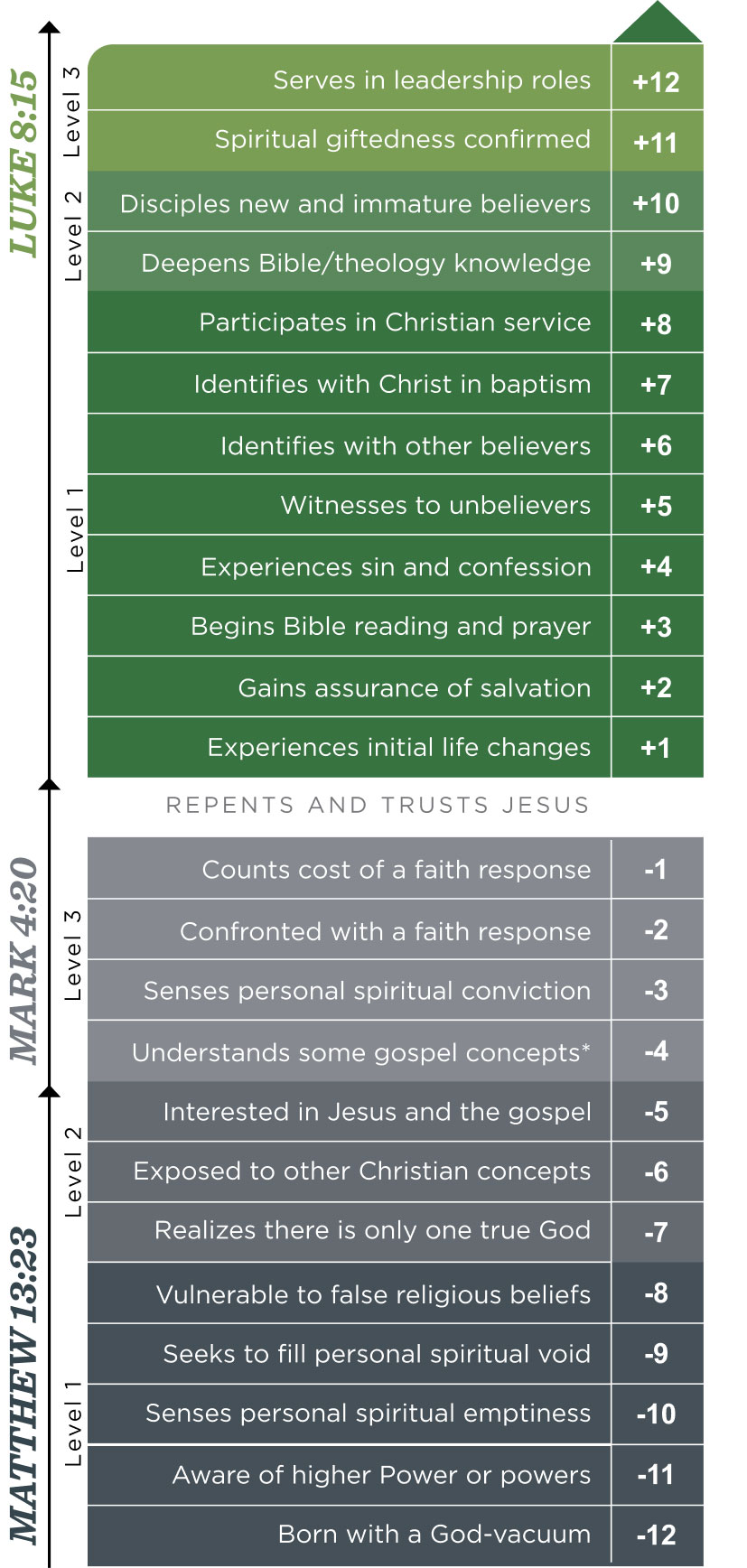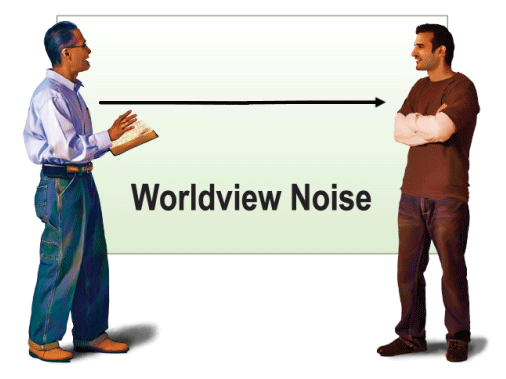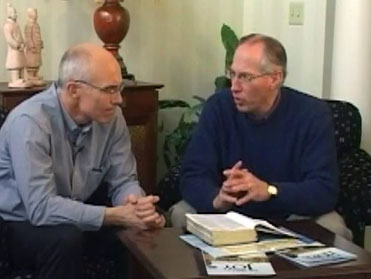
What is Good Soil?
Good Soil Evangelism & Discipleship takes its name from the parable of the seed and the soils. The seed is the message of the gospel. But how did Jesus define “good soil”? Matthew, Mark, and Luke recorded three different words that Jesus used on these occasions to describe “good soil.”
What is my role and what is God’s role in evangelism and discipleship?
The Good Soil E&D Scale1 is at the heart of Good Soil E&D training. The scale presents a visual overview of three participants in the process of evangelism and discipleship: (1) a person who needs to understand and embrace the gospel and then grow in his/her relationship with God, (2) a personal evangelist or disciple maker who communicates God’s Word for evangelism or discipleship, and (3) our God who works in people’s hearts to draw them to Himself.
The scale is particularly helpful in determining how much Bible content and Biblical context for that content we need to share with an unbeliever in order for him/her to make a “good soil” decision to genuinely embrace Jesus Christ as Savior.
1Adapted from the scale originally created by James F Engel and Viggo Søgaard and published in the 1975 book, What’s Gone Wrong With the Harvest?

How do I learn what another person’s worldview is?
All unbelievers are spiritually blind and cannot understand the gospel without God’s intervention (2 Cor. 4:3-4). The Holy Spirit must work in their hearts and minds to make it clearly understandable to them.
In addition to spiritual blindness, when an unbeliever’s worldview 1 is very different from the essential gospel truths of the Bible, worldview noise2 makes it even more difficult for him/her to understand the gospel message. As we present the gospel, we must understand this worldview noise problem. Then we must deliver God’s message of salvation in such a way that the worldview noise can be penetrated and the unbeliever can clearly understand the gospel.
1 Worldview: Perspective through which a person sees and interprets life.
2 Worldview Noise: Unbiblical elements in an unbeliever’s worldview belief system that (1) confuse his/her understanding of essential gospel truths and/or that (2) predispose him/her to reject the gospel.
How do I learn what another person’s worldview is?
How do I learn what another person’s worldview is?
In one very important sense, all humans are like onions—we all have layers. Our worldview layers are covered with an external layer of human commonalities, the needs, wants, and interests that we have just because we are human.
As we initiate “entry conversations” on topics of common interests, we look for entry points that allow us to transition to deeper worldview issues. Appropriately sensitive “investigative questions” help us learn more about their behavioral patterns, personal choices, and internalized values. Ultimately, we want to learn what their core beliefs are in order to know what worldview noise we may encounter as we engage in “conversion discussions.”
How can I help an unbeliever clearly understand the gospel?
When presenting the gospel to an unbeliever who knows little or nothing about the Bible and the Christian faith, it is likely that his or her worldview noise will be very dense. In order to penetrate that worldview noise, we need to explain the Biblical facts that are essential to understanding the gospel. But for those facts to make clear sense, we also need to set them in the historical context of the overall redemptive story that unfolds through the Bible.
The Story of Hope uses 40 key Bible events to summarize this story, 20 from the Old Testament and 20 from the New Testament. The book is formatted in such a way that the gospel message can be shared as a story in a few minutes, or taught in lesson form over several hours.
How can I help an unbeliever genuinely embrace the gospel?
The Chronological Bridge to Life reviews eight important truths that emerge out of the Bible’s story of hope—God, man, sin, death, Christ, cross, faith, and life. We call this the ChronoBridge because the eight concepts are presented in the chronological order in which they emerge out of the story. The ChronoBridge allows the gospel presenter to (1) clarify the gospel, (2) personalize the gospel, and (3) encourage-persuade an unbeliever to embrace the gospel. Each bridge concept is reinforced with a key Biblical text and a personal challenge to respond by faith to the gospel concept.
The gospel-summary visual can also be used as a stand-alone evangelistic tool—to tell the Bible’s big story (metanarrative). The story can be interwoven through the eight ChronoBridge concepts.
Eight Essential Truths Emerge out of the Bible’s Story of Hope
How can I help a new believer firmly hold on to the gospel?
Just as evangelism is a combined divine-human process, so it is with discipleship. True believers will persevere in the faith as disciples of Jesus Christ because God secures them. But, it is also true that God has chosen to use us to “make disciples.”
The Way to Joy is a basic follow-up study designed to lead a new believer through ten important lessons, covering an overview of God’s redemptive plan, the ChronoBridge to Life, security and assurance, the Bible, prayer, the Holy Spirit, personal holiness, witnessing, the local church, and God’s plan for the believer’s life. Each booklet includes a set of Bible memory verse cards and a chapter-per-day Bible reading plan.
The key to a Good Soil evangelism and discipleship lifestyle is to continually look for opportunities to initiate conversations that may become redemptive relationships.
And pray for us, too, that God may open a door for our message, so that we may proclaim the mystery of Christ, for which I am in chains. Pray that I may proclaim it clearly, as I should. Be wise in the way you act toward outsiders; make the most of every opportunity. Let your conversation be always full of grace, seasoned with salt, so that you may know how to answer everyone.
—Colossians 4:3-6
Join Our Mailing List
Get notices for new products, resources, and training events.






